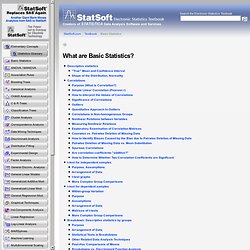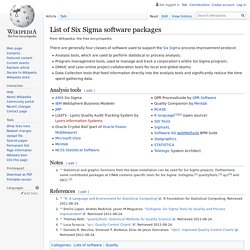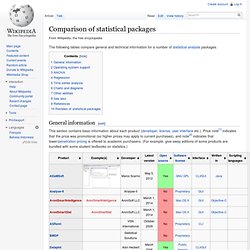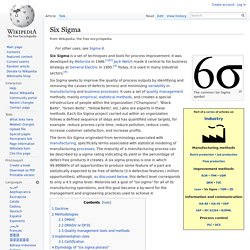

This is a Yoast Test Title. The following questions might guide your discussion if you are interested in further leadership training based on my TEDx talk: What are your images of leaders from movies and books? What characteristics do they share? Why do we like to take control? What gets in the way of us giving control? Why is it hard for some people to resist taking responsibility? Why is it harder to think than just do what you are told? What percent of people just want to be told what to do? Have you ever been in a situation where What’s your organization’s time constant? And a longer list: (Generated from discussion with NextJump on 15 June 2012) 1. 2. 3. 4. 5. 6. 7. 8. 9. 10. 11. 12. 13. 14. 15. 16. 17. 18. 19. Basic Statistics. Descriptive Statistics "True" Mean and Confidence Interval.

Probably the most often used descriptive statistic is the mean. The mean is a particularly informative measure of the "central tendency" of the variable if it is reported along with its confidence intervals. As mentioned earlier, usually we are interested in statistics (such as the mean) from our sample only to the extent to which they can infer information about the population. The confidence intervals for the mean give us a range of values around the mean where we expect the "true" (population) mean is located (with a given level of certainty, see also Elementary Concepts).
Shape of the Distribution, Normality. More precise information can be obtained by performing one of the tests of normality to determine the probability that the sample came from a normally distributed population of observations (e.g., the so-called Kolmogorov-Smirnov test, or the Shapiro-Wilks' W test. SEMATECH e-Handbook of Statistical Methods.
List of Six Sigma software packages. Wikipedia list article There are generally four classes of software used to support the Six Sigma process improvement protocol: Analysis tools, which are used to perform statistical or process analysis;Program management tools, used to manage and track a corporation's entire Six Sigma program;DMAIC and Lean online project collaboration tools for local and global teams;Data Collection tools that feed information directly into the analysis tools and significantly reduce the time spent gathering data.

Analysis tools[edit] Notes[edit] ^ Statistical and graphic functions from the base installation can be used for Six Sigma projects. Comparison of statistical packages. The following tables compare general and technical information for a number of statistical analysis packages.

General information[edit] This section contains basic information about each product (developer, license, user interface etc.). Price note[1] indicates that the price was promotional (so higher prices may apply to current purchases), and note[2] indicates that lower/penetration pricing is offered to academic purchasers. (For example, give-away editions of some products are bundled with some student textbooks on statistics.)
Operating system support[edit] ANOVA[edit] Support for various ANOVA methods. Minitab. Minitab is a statistics package developed at the Pennsylvania State University by researchers Barbara F.

Ryan, Thomas A. Ryan, Jr., and Brian L. Joiner in 1972. Minitab began as a light version of OMNITAB, a statistical analysis program by NIST; the documentation for OMNITAB was published 1986, and there has been no significant development since then.[2] Minitab is distributed by Minitab Inc, a privately owned company headquartered in State College, Pennsylvania, with subsidiaries in Coventry, England (Minitab Ltd.), Paris, France (Minitab SARL) and Sydney, Australia (Minitab Pty.). Today, Minitab is often used in conjunction with the implementation of Six sigma, CMMI and other statistics-based process improvement methods.
Minitab 17, the latest version of the software, is available in 8 languages: English, French, German, Japanese, Korean, Portuguese, Simplified Chinese, & Spanish. Six Sigma. The common Six Sigma symbol Six Sigma is a set of techniques and tools for process improvement.

It was developed by Motorola in 1986.[1][2] Jack Welch made it central to his business strategy at General Electric in 1995.[3] Today, it is used in many industrial sectors.[4] Six Sigma seeks to improve the quality of process outputs by identifying and removing the causes of defects (errors) and minimizing variability in manufacturing and business processes. It uses a set of quality management methods, mainly empirical, statistical methods, and creates a special infrastructure of people within the organization ("Champions", "Black Belts", "Green Belts", "Yellow Belts", etc.) who are experts in these methods.
Each Six Sigma project carried out within an organization follows a defined sequence of steps and has quantified value targets, for example: reduce process cycle time, reduce pollution, reduce costs, increase customer satisfaction, and increase profits.